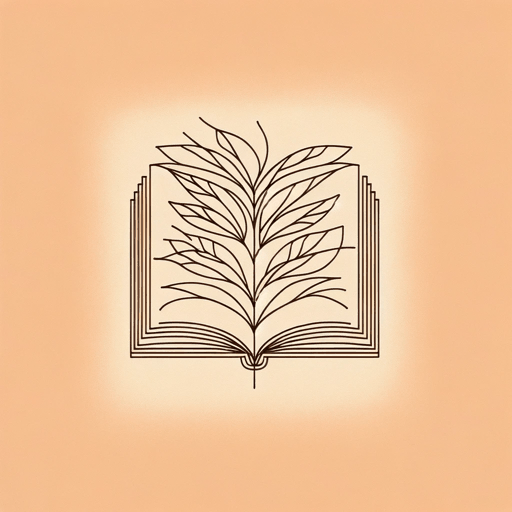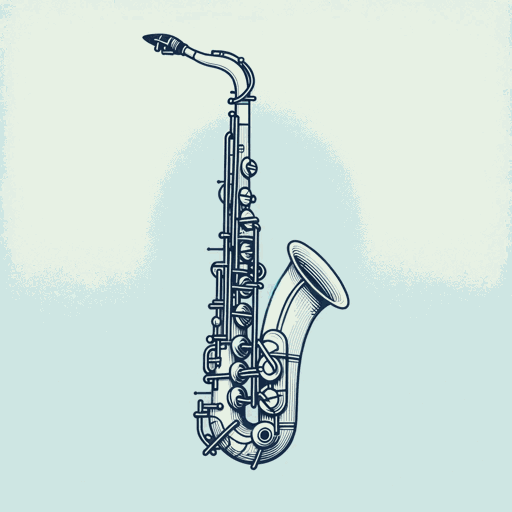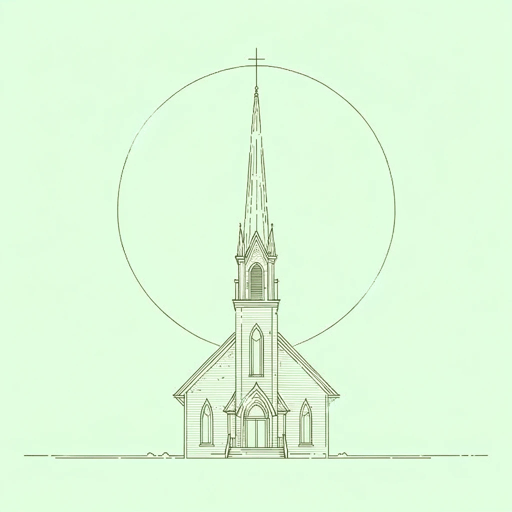Notes of a Native Son

43 pages • 1 hour read
A modern alternative to SparkNotes and CliffsNotes, SuperSummary offers high-quality Study Guides with detailed chapter summaries and analysis of major themes, characters, and more.
Essay Summaries & Analyses
Key Figures
Symbols & Motifs
Important Quotes
Essay Topics
Discussion Questions

Summary and Study Guide
Notes of a Native Son is a collection of nonfiction essays by James Baldwin . Baldwin originally published the essays individually in various literary and cultural commentary magazines between 1948 and 1955. The Beacon Press first republished the essays as Notes of a Native Son in 1955. This study guide refers to the 2012 Beacon Press edition of Notes of a Native Son . Citations to page numbers, however, come from the volume The Price of the Ticket: Collected Nonfiction, 1948-1985 , published by St. Martin’s/Marek in 1985 (hardback first edition), which includes all of the essays curated in Notes of a Native Son .
With the publication of Notes of a Native Son , along with his first novel Go Tell It on The Mountain , Baldwin catapulted into the national spotlight as a major literary figure. His rise coincided with the emergence of White liberal support for civil rights, and the White press came to see him as one of the leading voices of Black America. As this White support for civil rights waned by the beginning of the 1970s, Baldwin was deemed no longer relevant by the mainstream society, while Black readers would become more devoted to his later work.
Get access to this full Study Guide and much more!
- 7,350+ In-Depth Study Guides
- 4,950+ Quick-Read Plot Summaries
- Downloadable PDFs
Notes of a Native Son established Baldwin as a major essayist. All of his essays amount to meditations on race and reflections on slavery’s ongoing repercussions for human connection today. He offers these meditations by discussing the most mundane things that everyone can relate to—death, love, family, popular culture, fear, and desire. Baldwin’s essays closely connect to his own lived experience—which was both typical and atypical for a Black person in mid-twentieth century America. He grew up poor in Harlem, exposed to many of the cultural institutions central to that historic Black neighborhood in New York City. He also had an inimitable talent and drive for writing about the human condition as he experienced it. This led him to travel to Paris to find his way as a writer. While most Black people were not able to go this route, Baldwin was following a path laid out by Black writers and artists in the generations immediately preceding his. The New Negro Movement of the 1920s was also known as the Harlem Renaissance because Harlem was in many ways the cultural epicenter of this major development in Black history.
In “Everybody’s Protest Novel,” Baldwin criticizes Uncle Tom’s Cabin , coining it as a “protest novel,” a uniquely American literary genre . While the intention of the genre is to help the oppressed, he believes the novel perpetuates the agenda of White liberals using stock characters that don’t accurately portray the experiences of slaves as complex human beings. Baldwin explores another novel of this genre, Native Son , in “Many Thousands Gone.” The title of the essay references the deaths of thousands of slaves, and Baldwin argues that the novel, and society, refuses to move past slavery, and the Black community alienates Black people who try to overcome segregation.
The SuperSummary difference
- 8x more resources than SparkNotes and CliffsNotes combined
- Study Guides you won ' t find anywhere else
- 100+ new titles every month
In “Carmen Jones: The Dark is Light Enough,” Baldwin criticizes the musical film Carmen Jones , which took the plot from the opera Carmen and gave it an all-Black cast. Baldwin points out that the American public tends to sexualize the Black body, and the film doesn’t better the opera’s message. He also notes that the actors are all very light-skinned, making them “light enough” for Hollywood.
In “The Harlem Ghetto,” Baldwin portrays his neighborhood in New York City, along with the racial oppression therein, and he considers that interracial understanding might be possible. In “Journey to Atlanta,” he tells the story of his brother’s quartet, The Melodeers , whom the Progressive Party sponsored, but then abandoned in Atlanta. Baldwin points out the party’s attempt to gain the favor of Black voters, though they had no interest in helping the Black community.
“Notes of a Native Son” discusses Baldwin’s father’s life history and death, their strained relationship, and the generational pain that caused his father to be distant from his family. “Encounter on the Seine,” centers on the interactions between Black Americans, White Americans, Black Africans, and Black American entertainers in Paris. Baldwin suggests that Black Americans, displaced by slavery, have no heritage or roots as do Europeans. In “A Question of Identity,” Baldwin posits that Americans’ sense of time, understanding of society’s limitations, and skewed concept of freedom, leave American students in Europe without a sense of identity.
“Equal in Paris” tells the story of Baldwin’s arrest for using a friend’s bedsheet, which the friend had stolen from a hotel. Baldwin notes that his jailers were no better or worse than their American counterparts. In “Stranger in the Village,” Baldwin relates how the people of a Swiss village, who had never seen a Black person, treated him as a novelty—they did not intend to be unkind, as a contemporary White American might, but their reactions were dehumanizing.

Don't Miss Out!
Access Study Guide Now
Related Titles
By James Baldwin

Another Country
James Baldwin

A Talk to Teachers
Blues for Mister Charlie

Giovanni's Room

Going To Meet The Man

Go Tell It on the Mountain

I Am Not Your Negro

If Beale Street Could Talk

If Black English Isn't a Language, Then Tell Me, What Is?

Nobody Knows My Name: More Notes of a Native Son

No Name in the Street
Sonny's Blues

The Amen Corner

The Fire Next Time

The Rockpile
Featured Collections
A black lives matter reading list.
View Collection
Black Arts Movement
Existentialism, hate & anger.
Home — Essay Samples — Literature — Coming of Age — Literary Analysis Of James Baldwin’s Notes Of A Native Son
Literary Analysis of James Baldwin's Notes of a Native Son
- Categories: Coming of Age Literary Criticism
About this sample

Words: 1532 |
Published: Dec 16, 2021
Words: 1532 | Pages: 3 | 8 min read
Works Cited
- Baldwin, James. Notes of a native son. No. 39. Beacon Press, 1984.
- Baldwin, James. Notes of a native son. Royal Blind Society of New South Wales., 1998.
- Seresin, Indiana. 'Notes of a Native Son Notes of a Native Son.' LitCharts.LitCharts LLC, 6 Jun 2017. Web. 8 May 2019
- Margolies, Edward. 'Native Sons: A Critical Study of Twentieth-Century Negro American Authors.' (1968).
Should follow an “upside down” triangle format, meaning, the writer should start off broad and introduce the text and author or topic being discussed, and then get more specific to the thesis statement.
Provides a foundational overview, outlining the historical context and introducing key information that will be further explored in the essay, setting the stage for the argument to follow.
Cornerstone of the essay, presenting the central argument that will be elaborated upon and supported with evidence and analysis throughout the rest of the paper.
The topic sentence serves as the main point or focus of a paragraph in an essay, summarizing the key idea that will be discussed in that paragraph.
The body of each paragraph builds an argument in support of the topic sentence, citing information from sources as evidence.
After each piece of evidence is provided, the author should explain HOW and WHY the evidence supports the claim.
Should follow a right side up triangle format, meaning, specifics should be mentioned first such as restating the thesis, and then get more broad about the topic at hand. Lastly, leave the reader with something to think about and ponder once they are done reading.

Cite this Essay
Let us write you an essay from scratch
- 450+ experts on 30 subjects ready to help
- Custom essay delivered in as few as 3 hours
Get high-quality help

Verified writer
- Expert in: Literature

+ 120 experts online
By clicking “Check Writers’ Offers”, you agree to our terms of service and privacy policy . We’ll occasionally send you promo and account related email
No need to pay just yet!
Related Essays
2 pages / 745 words
1 pages / 659 words
2 pages / 768 words
4 pages / 1709 words
Remember! This is just a sample.
You can get your custom paper by one of our expert writers.
121 writers online

Still can’t find what you need?
Browse our vast selection of original essay samples, each expertly formatted and styled

Related Essays on Coming of Age
A House On Mango Street by Sandra Cisneros is a poignant and powerful coming-of-age novel that delves into the experiences of a young Latina girl growing up in a working-class neighborhood in Chicago. The novel is a collection [...]
The Catcher in the Rye, written by J.D. Salinger, is a novel that has been a source of controversy and debate since its publication in 1951. The story follows the protagonist, Holden Caulfield, as he navigates the complexities [...]
As humans, we are complex beings with multifaceted identities that make us who we are. In today's society, the question of "who am I?" can elicit various responses depending on the context and the individual. As a college [...]
John Steinbeck’s novella, “Of Mice and Men,” explores the lives of migrant workers in California during the Great Depression. One of the most intriguing characters in the novella is Curley’s wife. Throughout the story, she is [...]
As a youthful and curious child, the small town that Scout Finch lived in seemed like the world. Since the book To Kill a Mockingbird was set in the south during the course of the 1930s, where she lived included a lot of [...]
The House on Mango Street is a captivating, yet simplistic read, but also a very deep and complex read. This book does not flow regularly like most books, instead it has short, choppy chapters that can seem very unconnected. [...]
Related Topics
By clicking “Send”, you agree to our Terms of service and Privacy statement . We will occasionally send you account related emails.
Where do you want us to send this sample?
By clicking “Continue”, you agree to our terms of service and privacy policy.
Be careful. This essay is not unique
This essay was donated by a student and is likely to have been used and submitted before
Download this Sample
Free samples may contain mistakes and not unique parts
Sorry, we could not paraphrase this essay. Our professional writers can rewrite it and get you a unique paper.
Please check your inbox.
We can write you a custom essay that will follow your exact instructions and meet the deadlines. Let's fix your grades together!
Get Your Personalized Essay in 3 Hours or Less!
We use cookies to personalyze your web-site experience. By continuing we’ll assume you board with our cookie policy .
- Instructions Followed To The Letter
- Deadlines Met At Every Stage
- Unique And Plagiarism Free
Notes of a Native Son
By james baldwin, notes of a native son summary and analysis of autobiographical notes.
At the time when he wrote these “Autobiographical Notes,” James Baldwin was 31 years old. He begins by describing his childhood reading, which included Harriet Beecher Stowe ’s Uncle Tom’s Cabin and Charles Dickens’ A Tale of Two Cities . Because people around him insisted he read the Bible, he resisted reading it. Baldwin’s first publication came out when he was around 12 years old. It was a piece about the left-wing Spanish Revolution in 1936, but it was censored in the church newspaper. Baldwin also received encouragement for his writing, as when New York City mayor Fiorello La Guardia sent him a letter of congratulations and when he was awarded a Eugene F. Saxton Fellowship at 21.
In his twenties, Baldwin began living in the Village (i.e., the Greenwich Village neighborhood of Manhattan). He began writing book reviews, which he remarks were “mostly as it turned out, about the Negro problem, concerning which the color of my skin made me automatically an expert.” Tired of this situation, Baldwin went to France. This is where he finished his semi-autobiographical novel Go Tell It on the Mountain (1953).
Baldwin describes how difficult it is to be a writer, saying that it sometimes feels like the whole world conspires against him. Because the world does not care about the writer’s talent, one has to find other ways to feel valuable. Baldwin writes that, for him, race represented both the challenge to and the reward for being a writer: “[F]inally, I suppose, the most difficult (and most rewarding) thing in my life has been the fact that I was born a Negro and was forced, therefore, to effect some kind of truce with this reality.” He had to grapple with race before he could move onto other topics. Race affects everyone in the United States, he argues. One can only understand it by digging into the “[t]he history, traditions, customs, the moral assumptions and preoccupations of the country.” He argues that race is central to the works of William Faulkner, Robert Penn Warren, Ralph Ellison, and many others. Making reference to Ernest Hemingway, Baldwin writes that his primary responsibility as a writer is to “get [his] work done.” He ends by stating: “I want to be an honest man and a good writer.”
Baldwin introduces his life to the reader by discussing his literary influences, what it means to be a black writer in America, and his principles for creating good and honest writing. Baldwin’s influences are wide-ranging. In trying to describe his style, he writes: “I hazard that the King James Bible, the rhetoric of the storefront churches, something ironic and violent and perpetually understated in Negro speech—and something of Dickens's love for bravura—have something to do with me today, but I wouldn't stake my life on it.” Though Baldwin earlier states that he avoided reading the Bible, here he admits that its language influenced his writing (after all, as a teenager he worked briefly as a preacher) along with everyday black speech and nineteenth-century novelists like Dickens.
Baldwin also argues that being a black writer in America means that one approaches the cultural heritage of Europe and North America differently. He describes himself as a “bastard of the West.” Having his family roots not in Europe but in Africa means that he approaches everything from Shakespeare to Bach, the Chartres Cathedral to the Empire State Building differently. “These were not really my creations, they did not contain my history.” While the black writer is fully knowledgeable about these traditions, he is separated from them. “This was not my heritage,” Baldwin writes. To live within a tradition while also being distant from it is a situation particular to the black writer. Many of the themes in this book center on this question of the black writer’s position in the world, which Baldwin describes here as a lack of place.
Another challenge of being a black writer, according to Baldwin, is that there is so much written about the “Negro problem.” In terms of racism in America, merely compiling information is not enough to transform things. In fact, the assumption that one has solved something simply through reading can also be dangerous. However, the writer’s job, according to Baldwin, is to dig deep into the roots of problems and social issues: “It is part of the business of the writer—as I see it—to examine attitudes, to go beneath the surface, to tap the source.” Even so, Baldwin argues that the issue of race creates a particularly difficult challenge for the black writer. To be a good writer one must build on one’s personal experiences. However, being black in America means being prevented from looking too closely at one’s own experiences because the hate and fear one experiences can be so overwhelming. In this way, Baldwin states here, the task of the black writer is doubly difficult.

Notes of a Native Son Questions and Answers
The Question and Answer section for Notes of a Native Son is a great resource to ask questions, find answers, and discuss the novel.
Note of a Native Son by James
This is really asking for your opinion. I don't know what meant something to you. It is a personal question.
In what month and year do the events of the essay take place?
Notes of a Native Son is a collection of essays written and published by the African-American author James Baldwin. Your question depends on which essay you are referring to.
What is the author’s goal in this book? And what kind of effect does he want his book to have in the world?
Baldwin believes that one cannot understand America without understanding race. Yet this does not only mean looking at the experiences of African Americans, though this is crucial. Baldwin argues that the racial system in America (the history of...
Study Guide for Notes of a Native Son
Notes of a Native Son study guide contains a biography of James Baldwin, literature essays, quiz questions, major themes, characters, and a full summary and analysis.
- About Notes of a Native Son
- Notes of a Native Son Summary
- Character List
Essays for Notes of a Native Son
Notes of a Native Son essays are academic essays for citation. These papers were written primarily by students and provide critical analysis of Notes of a Native Son by James Baldwin.
- The Identity Crisis in James Baldwin’s Nonfiction and in Giovanni’s Room (1956)
Lesson Plan for Notes of a Native Son
- About the Author
- Study Objectives
- Common Core Standards
- Introduction to Notes of a Native Son
- Relationship to Other Books
- Bringing in Technology
- Notes to the Teacher
- Related Links
- Notes of a Native Son Bibliography
Notes of a Native Son
James baldwin, everything you need for every book you read..

IMAGES
COMMENTS
Analysis. Baldwin's father died in 1943, a few hours before his last child was born. After his father's funeral, which took place on Baldwin's birthday, a race riot broke out in Harlem. This series of events seemed to have been designed to mock Baldwin's lack of belief in the apocalypse, a distinct contrast to the beliefs of his father.
Form and Content. Notes of a Native Son is a collection of ten essays that James Baldwin published in magazines such as Commentary, Harper's, and The Partisan Review between 1948 and 1955. It ...
Notes of a Native Son study guide contains a biography of James Baldwin, literature essays, quiz questions, major themes, characters, and a full summary and analysis. ... Analysis. This essay is the central piece of Notes of a Native Son, to which it lends its name. The piece powerfully moves between different topics and themes, from Baldwin ...
In the title essay " Notes of a Native Son ," Baldwin discusses his father, who died in 1943. Baldwin describes his father in depth, a man who was born while his parents were still slaves. His father had trouble connecting with his children, who were scared of him. Towards the end of the father's life, it was discovered that he was mentally ...
A documentary about James Baldwin called I Am Not Your Negro was released in 2016 and was a major critical and commercial success. The best study guide to Notes of a Native Son on the planet, from the creators of SparkNotes. Get the summaries, analysis, and quotes you need.
In the title essay, "Notes of a Native Son," Baldwin juxtaposes his feelings upon his father's death—the end of a lifetime of racial bitterness—with images of Harlem in August, 1943 ...
Literary Essentials: Nonfiction Masterpieces Notes of a Native Son Analysis. Notes of a Native Son is best understood as the work of a young writer searching for an identity and struggling to ...
The essay analyzes Uncle Tom's Cabin, the novel by Harriet Beecher Stowe, first published in 1852. Baldwin sees Stowe's novel as indicative of a uniquely American literary genre, the protest novel; and he views the genre itself as an American cultural condition. The intention of the genre, notes Baldwin, is to "bring greater freedom to ...
Overview. Notes of a Native Son is a collection of nonfiction essays by James Baldwin. Baldwin originally published the essays individually in various literary and cultural commentary magazines between 1948 and 1955. The Beacon Press first republished the essays as Notes of a Native Son in 1955. This study guide refers to the 2012 Beacon Press ...
Pages. 165. British edition. Notes of a Native Son is a collection of ten essays by James Baldwin, published in 1955, mostly tackling issues of race in America and Europe. The volume, as his first non-fiction book, compiles essays of Baldwin that had previously appeared in such magazines as Harper's Magazine, Partisan Review, and The New Leader.
Introduction: There is a flimsy line between adoration and loathe in James Baldwin's paper 'Notes of a Native Son.' Throughout this article James Baldwin persistently makes references to life and death, blacks and whites, and love and hate. He utilizes his little experiences to clarify a lot bigger, increasingly confounded picture of life. Background: From the first passage of the article to ...
"Notes of a Native Son," the famous narrative essay by James Baldwin is analyzed in this essay. the prompt included: The purpose of this analysis is for you to. Skip to document. ... Analysis Essay on Notes of a Native Son. Course: Writing Responsibly (UCWR110) 44 Documents. Students shared 44 documents in this course.
Critical Overview. Notes of a Native Son, when first published in 1955, did not sell well. However, when it was reissued in paperback form in 1957, after the publication of Baldwin's Giovanni ...
Essays for Notes of a Native Son. Notes of a Native Son essays are academic essays for citation. These papers were written primarily by students and provide critical analysis of Notes of a Native Son by James Baldwin. The Identity Crisis in James Baldwin's Nonfiction and in Giovanni's Room (1956)
Notes of a Native Son. James Baldwin. Beacon Press, Nov 20, 2012 - Literary Criticism - 208 pages. #26 on The Guardian's list of 100 best nonfiction books of all time, the essays explore what it means to be Black in America. In an age of Black Lives Matter, James Baldwin's essays on life in Harlem, the protest novel, movies, and African ...
Written in the middle of the twentieth century and in Baldwin's youth, these essays seem mature and prescient in their understanding of Baldwin's self and culture. They show a young artist ...
Myths state that people lose their "heads and morals" in Paris, bathing in the city's atmosphere of freedom. However, Baldwin argues that these myths have little to do with reality. Baldwin's exploration of the experience of American students in Paris is something of a departure from the rest of the book in that it is not based on his ...
The essays that comprise Baldwin's Notes of a Native Son were initially published in numerous magazines over a period of seven years. Despite the different places and periods in which Baldwin ...
The objective of this paper is a critical analysis of James Baldwin's essay 'Notes of a Native Son' in order to discover the racial discrimination, oppression, abuses, traumas faced by black African Americans in the United States. On the other hand, this analysis will develop the critical perception of the readers to understand American black ...